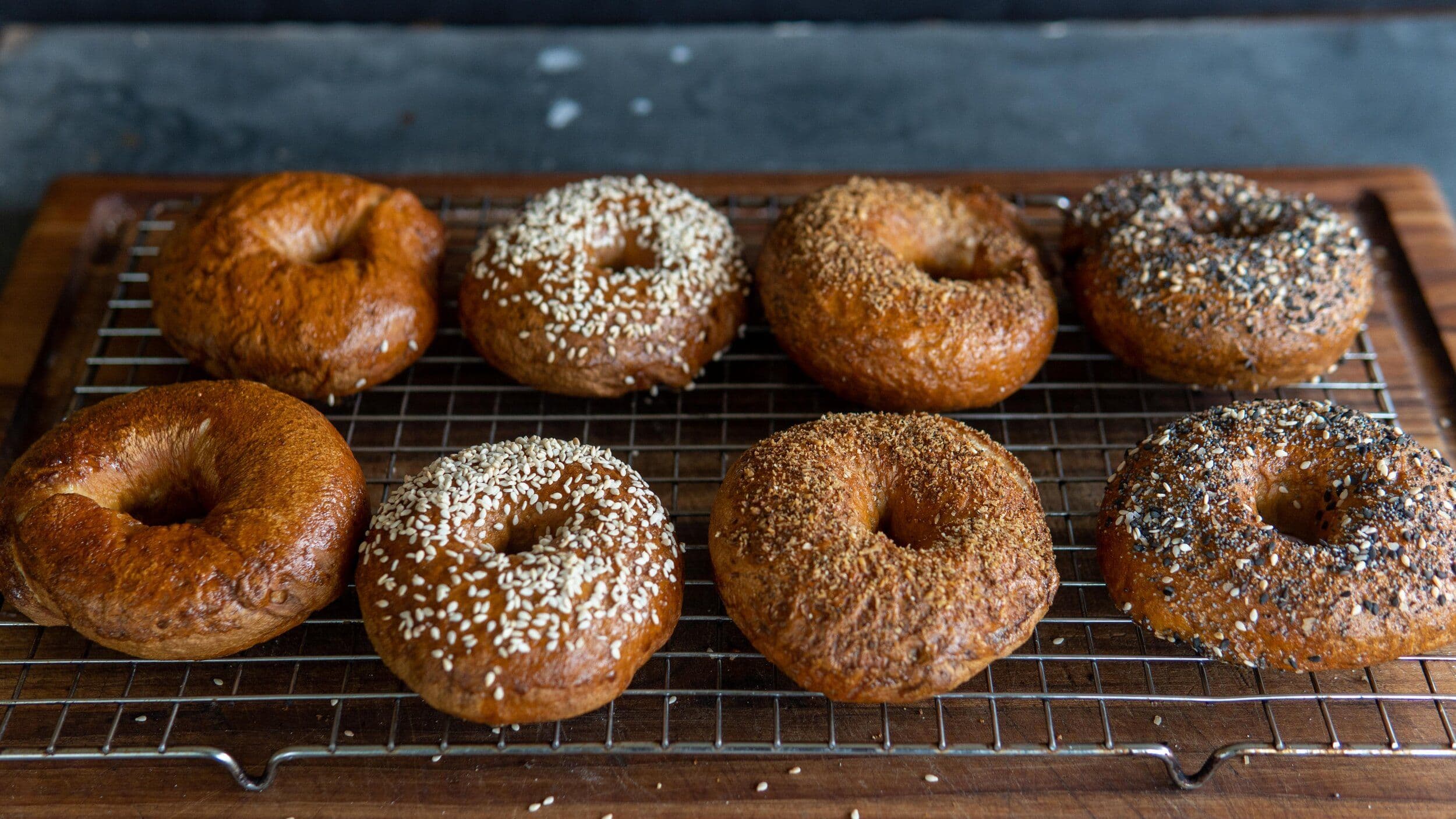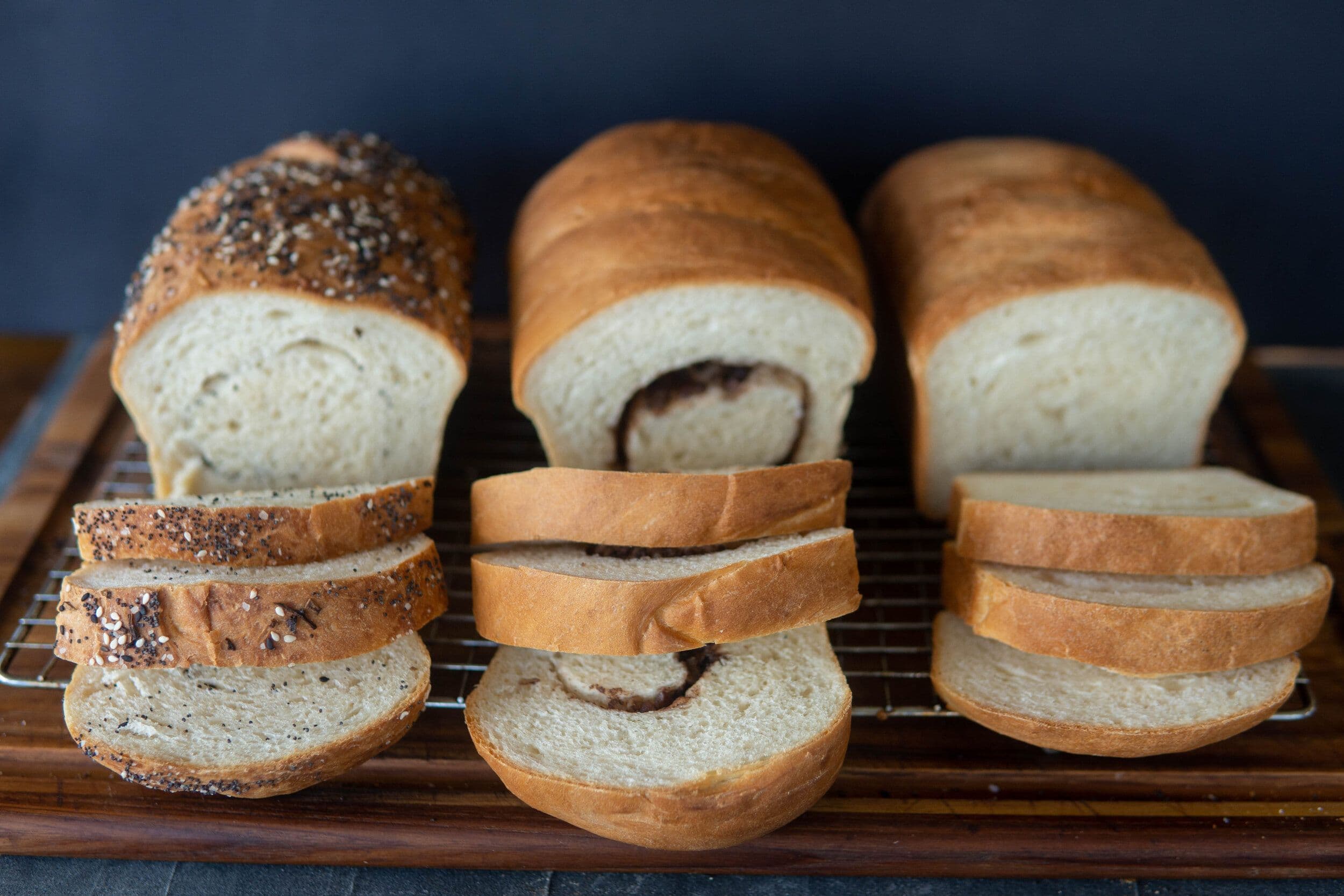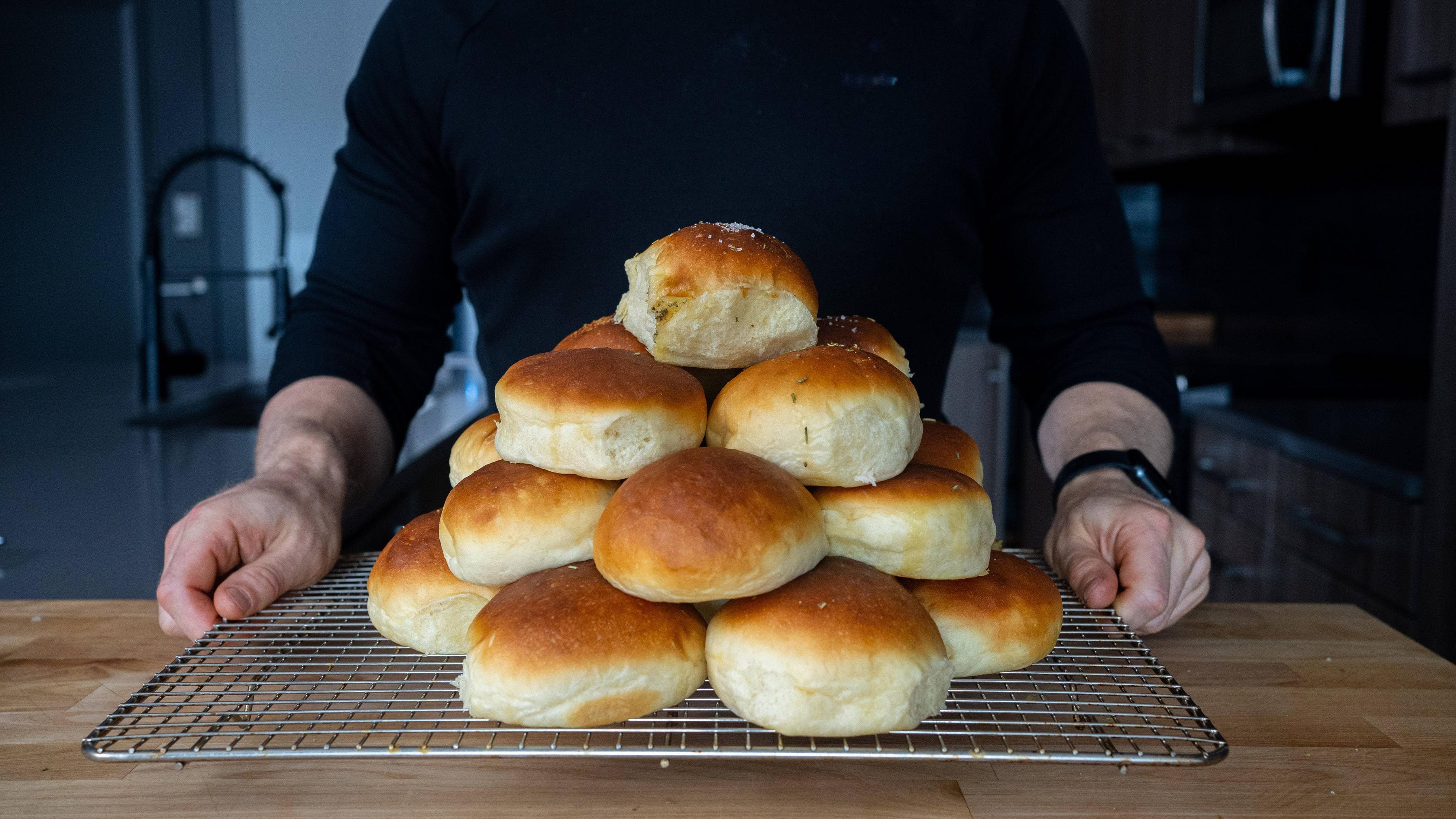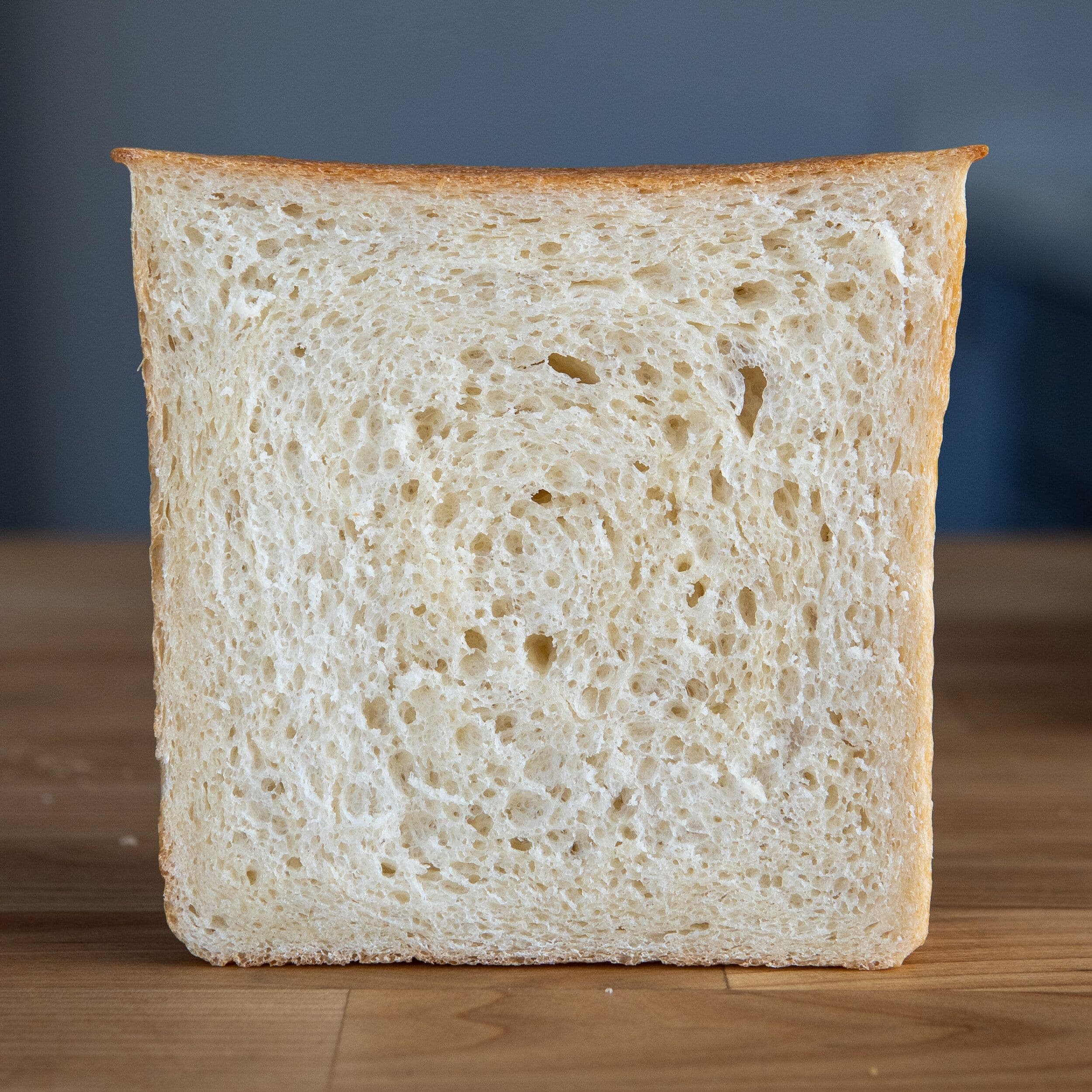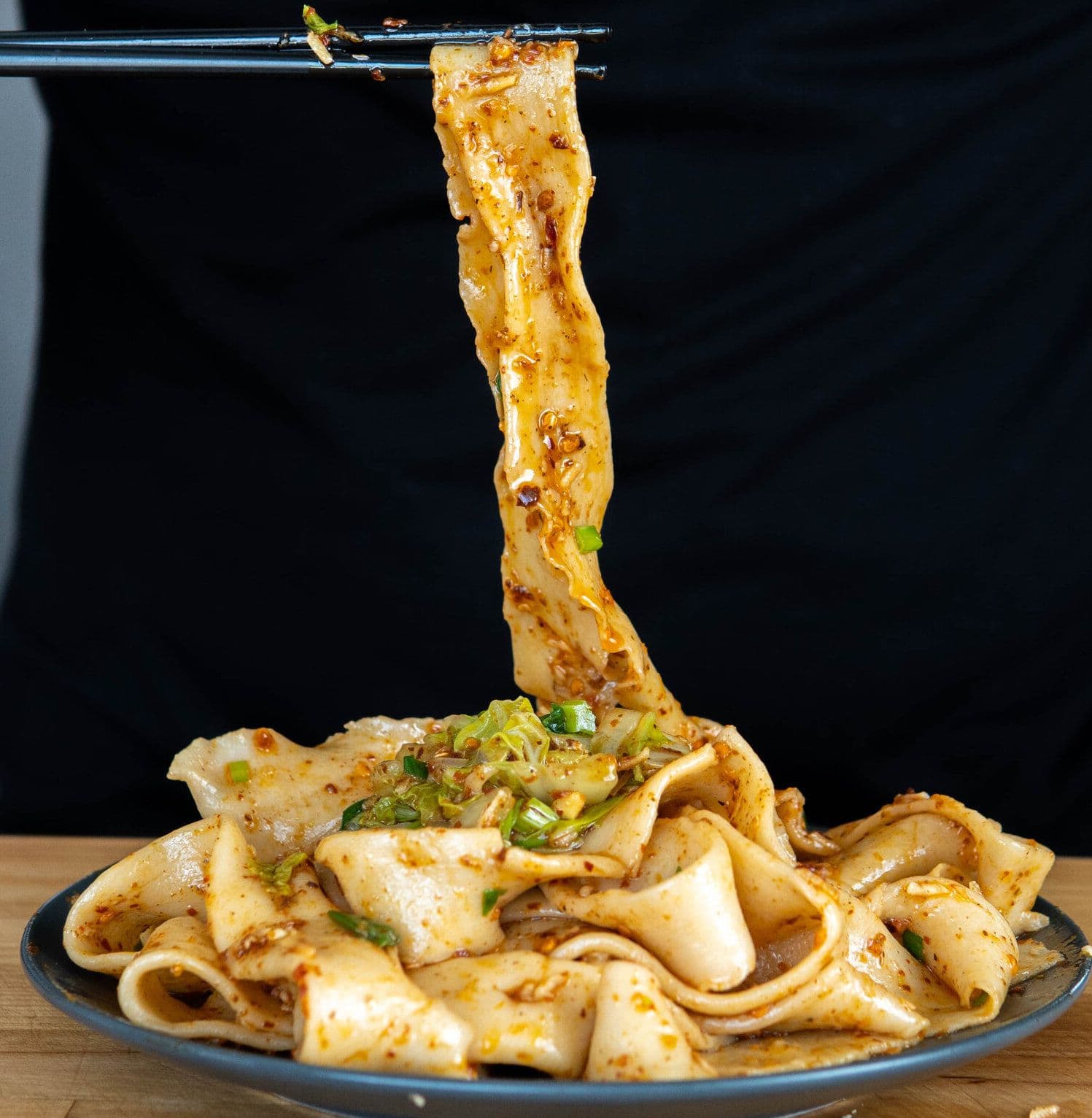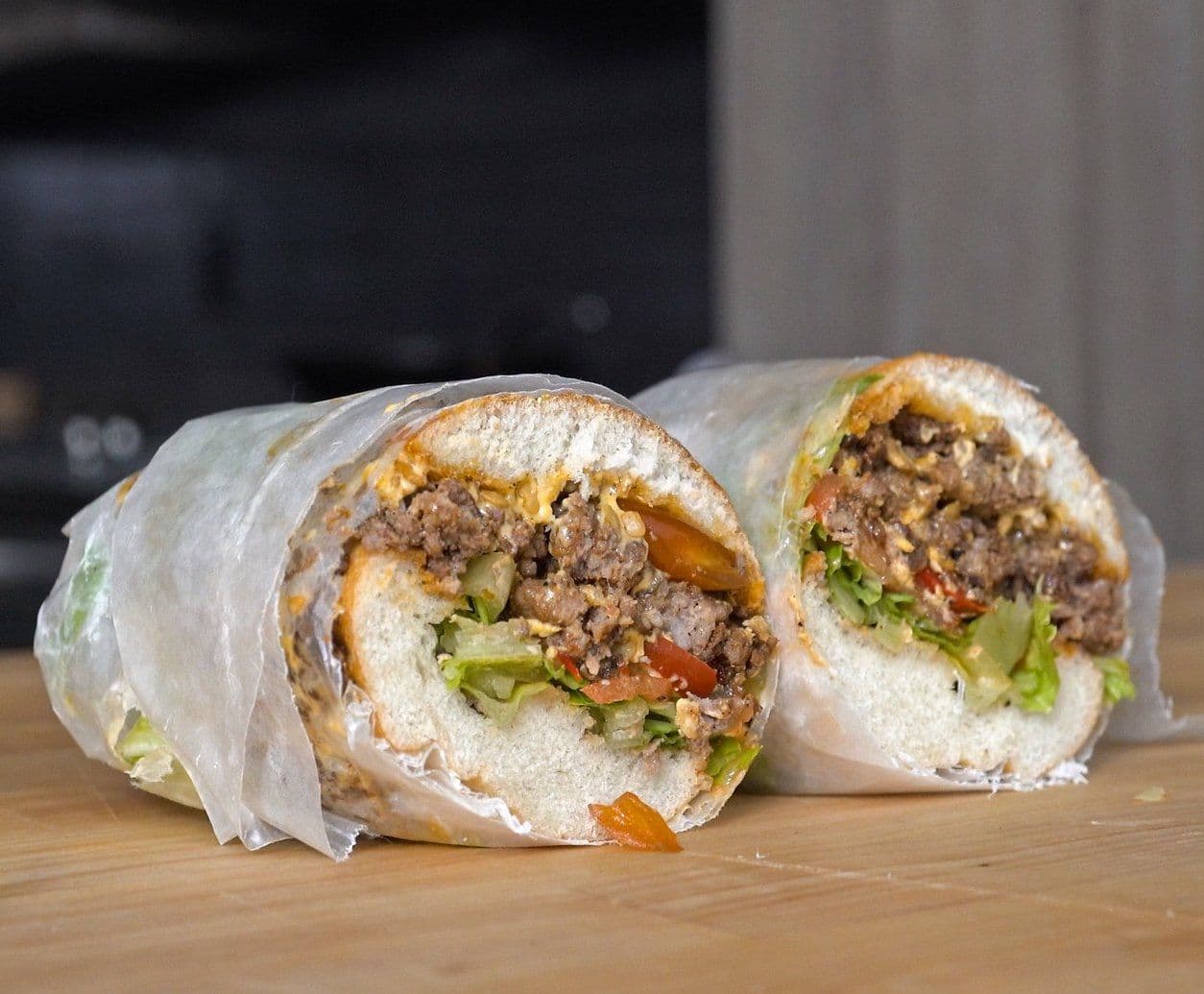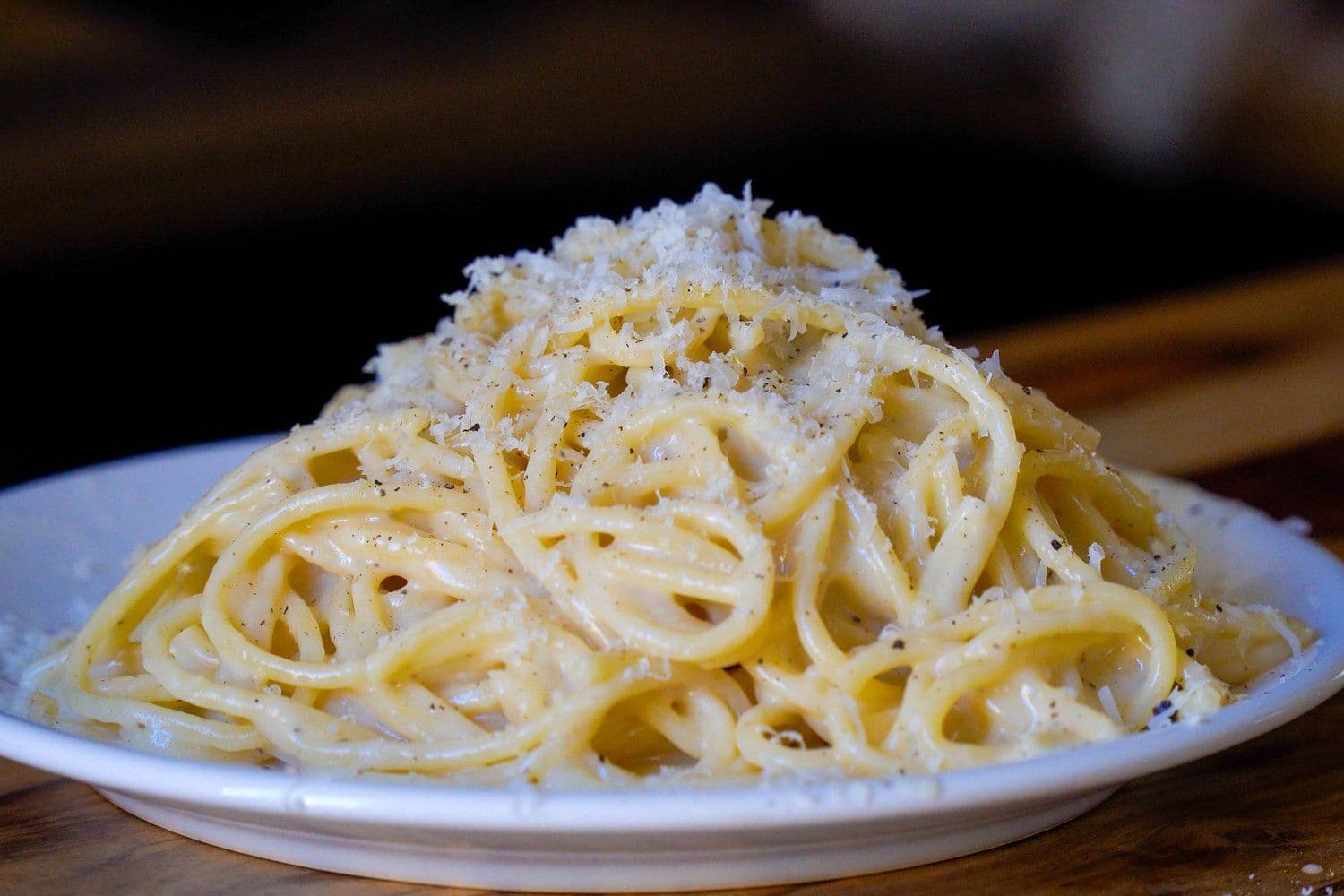New York Style Bagels
Better than New York City bagels, and optimized for the home kitchen.
 By Ethan Chlebowski
By Ethan ChlebowskiI developed this recipe to get NYC results without the need for 48-hour fermentations or messing with lye and barley syrups.

Ethan Chlebowski
Ingredients
Bagel dough
- instant yeast8 g
- honey, or sugar20 g
- water, warm, around 105-115°F300 g
- bread flour500 g
- salt10 g
Poaching liquid
- water~2000 g
- baking soda15 g
- salt15 g
- honey, or sugar or barely syrup30 g
For baking
- eggs1
- watera splash
- cornmeala sprinkle
Everything bagel seasoning
- poppy seeds2 parts
- black sesame seeds1 part
- sesame seeds1 part
- garlic powder1 part
- onion powder, or flakes1 part
- flaky salt1 part
Method
Step 1: Mix the dough
Add the yeast and honey to the warm water. Stir until dissolved. Let stand for 5 minutes until a light foam surfaces and little bubbles are visible.
- Note: Proofing is done to test the viability of the yeast. If there is no foam surface or little bubbles the yeast is likely dead and should be discarded for new yeast.
Meanwhile, add the flour and salt to a large mixing bowl. Once the yeast is proofed, pour in the mixture and vigorously mix the dough with your hands until no dry flour remains in the bowl and a cohesive mass forms, about 2-3 minutes. The dough will be sticky and stiff. Cover with plastic wrap and let rest for 15 minutes.
- Note: Resting will allow the flour to start hydrating all on its own, and make the dough a little bit easier to work with when we start it.
Step 2: Kneading
Once rested, turn the dough onto the counter, do not add extra flour. the dough by pressing with the heel of your hand away from you, fold the dough back over and repeat.
Continue kneading for 8-10 minutes (set a timer). The dough will be stiff due to the low hydration but as it is kneaded it will become more pliable and smooth on the outside.
After the 8-10 minutes, test for gluten development by cutting off a small piece of the dough and stretching it very thin to see if it is slightly translucent before tearing.
- Note: The is the key to understanding if the flour has been hydrated enough. If the dough tears before getting to a slightly translucent window, continue with the kneading for another couple of minutes.
Step 3: Bulk ferment
After , cover with plastic wrap and let the dough rise until doubled in size, about 45 minutes.
Step 4: Divide, shape, & proof
Once doubled, divide the dough into 8, 100-gram portions. Shape each portion into a taut ball and let rest for 5 minutes. Meanwhile, get out a large baking sheet and sprinkle over some cornmeal. For bagel shaping, there are two options:
- Rolled: Roll the dough flat to about 5 inches wide. Roll the dough into a tight cylinder. Wrap the cylinder around your hand and connect the two ends with a pinch, roll the dough ring off your hand. Place on the parchment paper to proof. The rolled method is typically the method used in bagel shops. It stretches the gluten more and is said to give a chewier bagel, but I didn't notice much difference in side-by-side taste tests.
- Punched: Punch a hole in the dough ball with your thumb and index finger. Stick your index finger from each hand into the hole and gently stretch the hole while rotating your fingers until about 2 inches wide. Place on the parchment paper to proof.
Shape each bagel and add them to the cornmeal-sprinkled baking sheet. Cover the baking sheet with plastic wrap and let the rolled bagels proof for 45 to 60 minutes at room temperature.
- Alternatively, the bagels can be placed in the fridge to proof overnight or even up to two days. This slow fermentation will generate additional flavor compounds.
During this final proofing stage, move on to the next steps while waiting.
Step 5: Prep egg wash & seasoning
Make the egg wash: Beat together the egg and the water until smooth.
Make the everything seasoning: Combine all spices in a container. Set aside.
With 15 minutes left to proof, fill a large wok, pan, or pot with 2 liters of water). Set on high heat and bring to a .
Additionally, preheat the oven to 475°F/246°C on the convection setting (500°F/260°C for no convection).
Step 6: Boil
Add the baking soda, salt, and honey to the water. Stir until completely dissolved.
Place the sheet of proofed bagels to the left of the water and set a second parchment-lined baking sheet on the right.
- Drop the bagels into the poaching liquid in small batches. Let each boil on one side for about 45 seconds, then using a slotted spoon to flip the bagels and cook for another 45 seconds.
- Remove the boiled bagels from the water and let them drip before placing them on the other baking sheet.
Repeat until all the bagels are done.
Gently brush the egg wash on the bagels and sprinkle over the everything bagel seasoning to create an even coat.
Step 7: Bake
Add the sheet pan of bagels to the preheated oven and set a timer for 12 minutes.
Halfway through, open the oven and rotate the pan to promote even browning.
- Pull the bagels when they are golden brown all over and sound hollow when thumped.
Remove the bagels from the oven and place on a cooling rack for 10 minutes before slicing and enjoying.
FAQ
Also Appears In

Free Spice Guide
Join The Mouthful Newsletter to receive our essential spices list pdf.
Just subscribe to our weekly newsletter where 60,000+ readers get lifestyle protocols, recipe frameworks, Q&A from expert home cooks, and cooking trends explained.
We hate spam too. Unsubscribe anytime.

